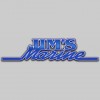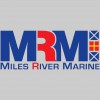MAESTRO is a computer program for rationally-based design of large, complex thin-walled structures. In essence, MAESTRO is a synthesis of finite element analysis, failure (or limit state) analysis, and mathematical optimization, all of which is integrated under a user-friendly graphical interface.
By virtue of its 25-year history and worldwide user base, MAESTRO has been applied to a wide range of aluminum, composite, and steel structures: naval vessels from patrol boats to a 41,000 tonne carrier (USS Wasp), coast guard cutters, double hull tankers, high speed ferries, SWATH and catamaran ships, bulk carriers of all types (including molten sulfur), and many other (non-ship) types of structures.
By virtue of its 25-year history and worldwide user base, MAESTRO has been applied to a wide range of aluminum, composite, and steel structures: naval vessels from patrol boats to a 41,000 tonne carrier (USS Wasp), coast guard cutters, double hull tankers, high speed ferries, SWATH and catamaran ships, bulk carriers of all types (including molten sulfur), and many other (non-ship) types of structures.
Services
MaestroMarine LLC is staffed by naval architects and marine engineers with an extensive background in many types of design, engineering, and analysis projects. Over the years, our staff has carried out countless ship design and analysis projects, using advanced computer-aided design/engineering (CAD/CAE) tools and naval architecture fundamentals to solve a range of problems in an efficient and cost-effective manner for our customers.
MAESTRO offers numerous ship-based loading patterns (e.g., Basic Loads: Cargo Loads, Liquid Tank Loads; Sea Environment: Hull Girder Loads/Sea Loads/Ship Motion Loads; and Operational Loads: Slamming/Flooding/Docking) to accurately and efficiently produce the necessary load cases.
These load patterns include scaled masses, panel pressures, mass distributions, tank loads, longitudinal and transverse hull girder load distributions, hydrostatic loads (stillwater/wave), additional accelerations, and hydrodynamic loads.Tanks are easily modeled and loaded in MAESTRO similar to hydrostatic analysis tools by leveraging the existing structural model to define the tank boundaries.
These load patterns include scaled masses, panel pressures, mass distributions, tank loads, longitudinal and transverse hull girder load distributions, hydrostatic loads (stillwater/wave), additional accelerations, and hydrodynamic loads.Tanks are easily modeled and loaded in MAESTRO similar to hydrostatic analysis tools by leveraging the existing structural model to define the tank boundaries.
In addition to calculating displacements and stresses using the finite element analysis method, MAESTRO also performs an automatic failure evaluation of the principal structural members. Core to the modeling paradigm in MAESTRO is the ability to retain critical stiffened panel boundary conditions and parameters (e.g., true panel spans) for proper and accurate buckling assessment downstream in the analysis process.
The MAESTRO base module includes the graphical modeler for developing, loading, and post-processing MAESTRO structural models. MAESTRO's modeling paradigm is organized to rapidly generate a finite element model of an entire ship.
Using high-level building blocks (i.e., MAESTRO substructures and modules), MAESTRO can leverage longitudinal uniformity typically found within portions of a ship (e.g., plating thickness or frame size throughout a cargo hold, etc.).Each module has its own local coordinate system, and can be copied, rotated or transformed.
Using high-level building blocks (i.e., MAESTRO substructures and modules), MAESTRO can leverage longitudinal uniformity typically found within portions of a ship (e.g., plating thickness or frame size throughout a cargo hold, etc.).Each module has its own local coordinate system, and can be copied, rotated or transformed.
The ALPS/ULSAP module adds an additional set of limit state criteria to MAESTRO's automatic failure mode evaluation. Ultimate limit state evaluation of unstiffened uni-axially stiffened panels and cross-stiffened panels.
Any combination of load components, namely longitudinal axial compression or tension, transverse axial compression or tension, edge shear, longitudinal in-plane bending, transverse-in-plane bending-and lateral pressure can be applied.Either steel or aluminum alloy material can be dealt with, considering the softening effect in heat affected zone caused by welding.
Any combination of load components, namely longitudinal axial compression or tension, transverse axial compression or tension, edge shear, longitudinal in-plane bending, transverse-in-plane bending-and lateral pressure can be applied.Either steel or aluminum alloy material can be dealt with, considering the softening effect in heat affected zone caused by welding.
Reviews

Be the first to review Maestro Marine.
Write a Review



